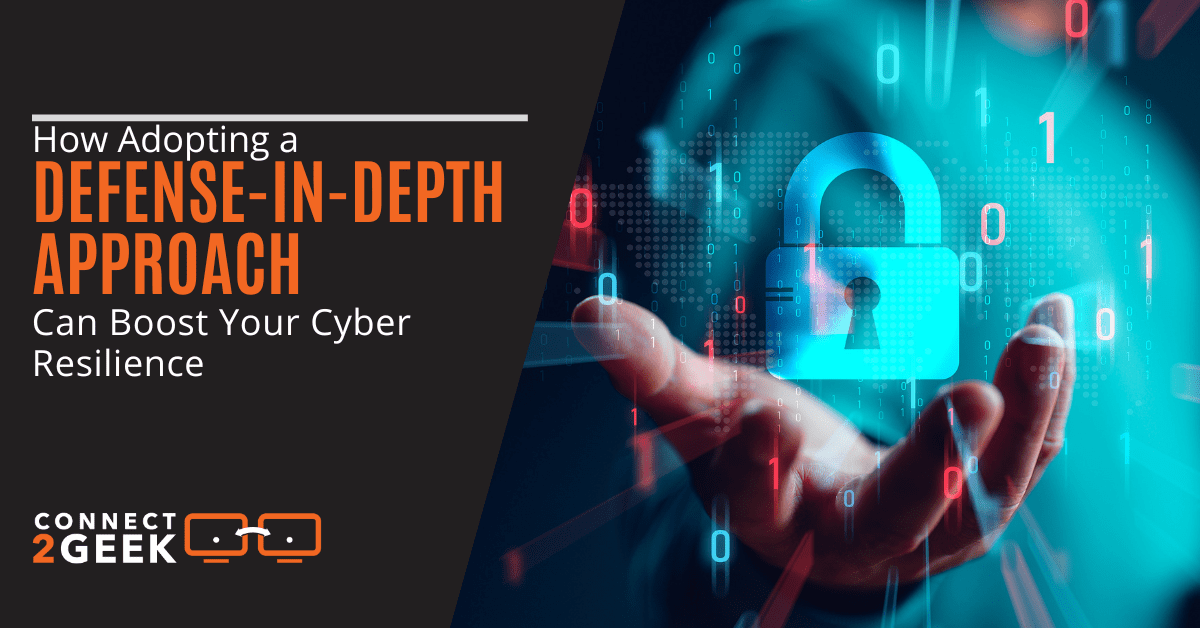
In today’s increasingly digital world, cybersecurity has become a critical concern for individuals and organizations alike. The constantly evolving threat landscape demands a proactive and comprehensive approach to protect sensitive information and mitigate the risks of cyber attacks.
One such approach gaining prominence is the defense-in-depth strategy. By layering multiple security measures, this approach strengthens an organization’s cyber resilience and reduces the chances of successful breaches. In this article, we will explore how adopting a defense-in-depth approach can significantly enhance your cyber resilience and protect against ever-evolving cyber threats.
What is Defense-in-Depth?
Defense-in-depth is a strategic cybersecurity approach that emphasizes the use of multiple layers of defense mechanisms to safeguard an organization’s digital assets. Instead of relying solely on a single security measure, this approach employs a combination of technical, physical, and administrative controls to create a robust security posture. By adopting this layered approach, organizations can create multiple barriers that cybercriminals must overcome, thereby reducing the likelihood of successful attacks.
What are the Layers of Defense-in-Depth?
Perimeter Security
The first layer of defense focuses on securing the perimeter of the network or system. Firewalls, intrusion detection systems (IDS), and intrusion prevention systems (IPS) are commonly employed to monitor and filter incoming and outgoing network traffic. This layer acts as a gatekeeper, controlling access to the internal network and preventing unauthorized entry.
Authentication and Access Controls
The second layer involves implementing strong authentication measures and access controls. This includes robust password policies, multi-factor authentication (MFA), and role-based access control (RBAC). By verifying user identities and limiting access privileges, organizations can minimize the risk of unauthorized access to critical systems and data.
Endpoint Protection
Endpoints, such as computers, laptops, and mobile devices, are often the entry points for cyber attacks. This layer focuses on securing these endpoints through measures like antivirus software, endpoint detection and response (EDR) systems, and regular patch management. By ensuring the security of individual devices, organizations can prevent malware infections and other endpoint-based threats.
Data Encryption
Data encryption plays a crucial role in protecting sensitive information, both at rest and in transit. This layer involves encrypting data using strong algorithms and employing secure communication protocols. In the event of a breach, encrypted data is rendered useless without the corresponding decryption key, adding an extra layer of protection against unauthorized access.
Network Segmentation
Network segmentation involves dividing an organization’s network into smaller, isolated subnetworks. By separating systems and data based on their sensitivity and purpose, organizations can limit the lateral movement of attackers in case of a breach. Even if one segment is compromised, the damage can be contained, reducing the overall impact.
Continuous Monitoring and Incident Response
This layer focuses on actively monitoring network activities, detecting anomalies, and responding swiftly to potential security incidents. Intrusion detection systems, security information and event management (SIEM) tools, and incident response teams play a crucial role in this layer. Timely detection and response can minimize the impact of attacks and prevent further damage.
What are the Benefits of Adopting a Defense-in-Depth Approach?
Improved Resilience
By layering multiple security measures, organizations enhance their ability to withstand and recover from cyber attacks. Even if one layer is breached, the remaining layers act as additional barriers, increasing the overall resilience of the system.
Reduced Attack Surface
Defense-in-depth approach focuses on minimizing the attack surface by implementing multiple security controls. This makes it harder for attackers to exploit vulnerabilities and gain unauthorized access to critical assets.
Enhanced Detection and Response
The layered approach enables organizations to detect and respond to security incidents more effectively. By combining various monitoring and incident response mechanisms, organizations can detect attacks at different stages, enabling a faster response and minimizing the potential impact of breaches.
Compliance and Regulatory Requirements
Many industries have specific compliance and regulatory requirements for data security. Adopting a defense-in-depth approach helps organizations meet these obligations by implementing a comprehensive security framework that covers various aspects of data protection.
Adaptability to Evolving Threats
Cyber threats are constantly evolving, with new attack vectors emerging regularly. The defense-in-depth approach provides flexibility and adaptability to counter these evolving threats. Organizations can update and adjust each layer of defense as new vulnerabilities are discovered or new security technologies become available.
Defense-in-Depth: Challenges and Considerations
While the defense-in-depth approach offers numerous benefits, it is not without challenges and considerations. Here are a few key points to keep in mind:
Complexity
Implementing and managing multiple layers of security can be complex and resource-intensive. It requires careful planning, coordination, and ongoing monitoring to ensure all layers are functioning effectively.
Cost
Deploying a defense-in-depth strategy may involve investing in various security technologies, tools, and personnel. Organizations need to weigh the costs against the potential risks and benefits to determine the most appropriate and cost-effective approach.
User Experience
Introducing multiple security measures can sometimes impact user experience and productivity. Organizations should strike a balance between security and usability, ensuring that security measures do not hinder day-to-day operations.
Training and Awareness
A defense-in-depth approach is only effective if employees understand and follow security protocols. Regular training and awareness programs are essential to educate employees about potential threats, best practices, and their role in maintaining a secure environment.
Protect Your Digital Assets
In an era where cyber threats continue to grow in sophistication and scale, adopting a defense-in-depth approach is essential to protect sensitive information and maintain cyber resilience. By layering multiple security measures, organizations can create a robust defense system that makes it significantly more challenging for attackers to breach their networks and systems.
The benefits of improved resilience, reduced attack surface, enhanced detection and response, compliance adherence, and adaptability to evolving threats make defense-in-depth an invaluable strategy for any organization serious about cybersecurity. Invest in your organization’s cyber resilience today by embracing the power of defense-in-depth.
Ready to strengthen your cyber resilience? Contact Connect2Geek today to learn how our experts can help you implement a defense-in-depth strategy tailored to your organization’s unique needs.
